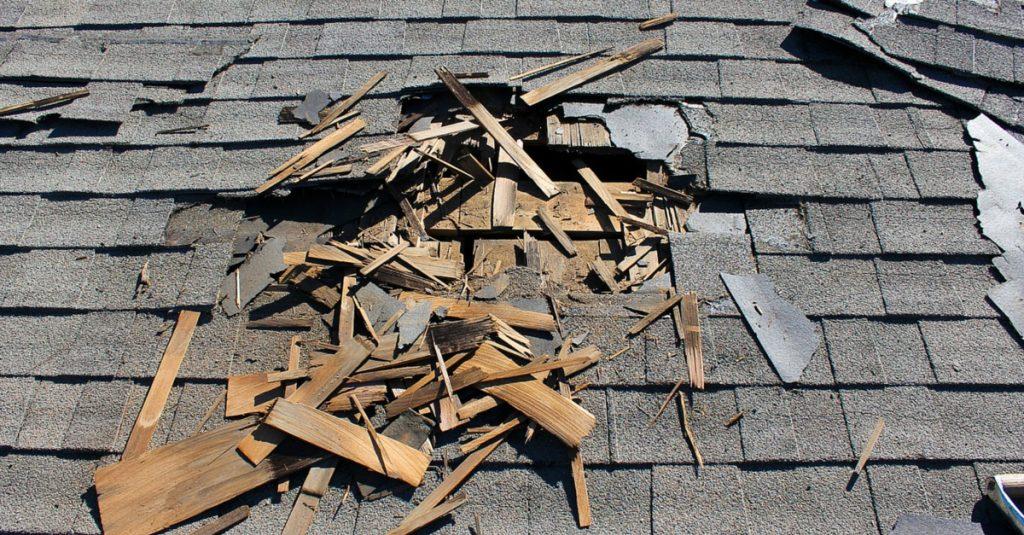A sudden storm has just passed, and you walk outside to inspect your house, only to find that some of your roof shingles have fallen off. This can be a distressing sight for any homeowner. Roof shingles serve as a protective barrier against the elements, and their absence can leave your home vulnerable to water leaks and other damages. In this article, we will explore the common causes of roof shingles fell off, how to repair the issue, and essential tips for prevention to ensure your roof remains intact and secure.

Causes of Roof Shingles Falling Off
Roof shingles are designed to withstand various weather conditions, but several factors can lead to them coming loose or falling off entirely.
1. Strong Winds
One of the primary culprits behind roof shingles falling off is strong winds. High-speed winds can create a lifting effect on the shingles, causing them to detach from the roof’s surface. This is particularly common during severe storms, hurricanes, or tornadoes.
2. Poor Installation
Improper installation of roof shingles can lead to premature damage and falling off. If the shingles are not nailed down correctly or if the adhesive is insufficient, they may not stay in place, especially during extreme weather events.
3. Aging and Wear
As roof shingles age, they become more susceptible to damage and may start to break, crack, or curl. Over time, the adhesive that holds the shingles in place can also weaken, leading to their detachment from the roof.
4. Impact Damage
External factors like falling tree branches, hailstorms, or debris can cause significant impact damage to the roof shingles. This damage may not always be apparent immediately, but it can weaken the shingles and eventually lead to their failure.
5. Ice Dams
In colder climates, ice dams can form on the roof’s edge due to melting snow and refreezing. Ice dams can lift the shingles and cause them to come off as the ice expands.
Repairing Fallen Roof Shingles
If you notice that some of your roof shingles have fallen off, prompt action is necessary to prevent further damage to your home.
1. Safety First
Before attempting any repairs, prioritize your safety. If the roof is steep or the damage extensive, it is best to leave the job to professionals. Climbing onto the roof without proper safety equipment can be hazardous.
2. Replace Missing Shingles
Carefully remove any loose debris from the roof and replace the missing shingles. Use roofing cement or adhesive to secure the new shingles in place, ensuring they align correctly with the remaining shingles.
3. Inspect for Other Damage
While repairing the fallen shingles, take the opportunity to inspect the entire roof for any other signs of damage. Look for cracked or curling shingles, loose nails, or any potential problem areas that may need attention.
Preventing Roof Shingles from Falling Off
While some factors leading to shingle detachment may be beyond your control, there are preventive measures you can take to minimize the risk.
1. Quality Installation
Ensure your roof is installed by a reputable and experienced professional. Proper installation is crucial for the longevity and durability of your roof.
2. Regular Inspections
Schedule regular roof inspections, especially after severe weather events. A professional inspection can help identify any minor issues before they escalate into more significant problems.
3. Trim Trees
Trim back overhanging branches that could potentially fall onto the roof during storms. This will reduce the risk of impact damage to the shingles.
4. Address Ice Dams
If you live in a cold climate, take steps to prevent ice dams from forming on your roof. Proper insulation and ventilation can help regulate the roof temperature and prevent ice dams.
Conclusion
Roof shingles fell off can be a concerning issue for homeowners, but understanding the common causes, timely repairs, and preventative measures can help maintain the integrity of your roof. Regular maintenance, quality installations, and quick responses to damages are key to ensuring your roof remains strong, secure, and fully equipped to protect your home from the elements.



Leave a Reply